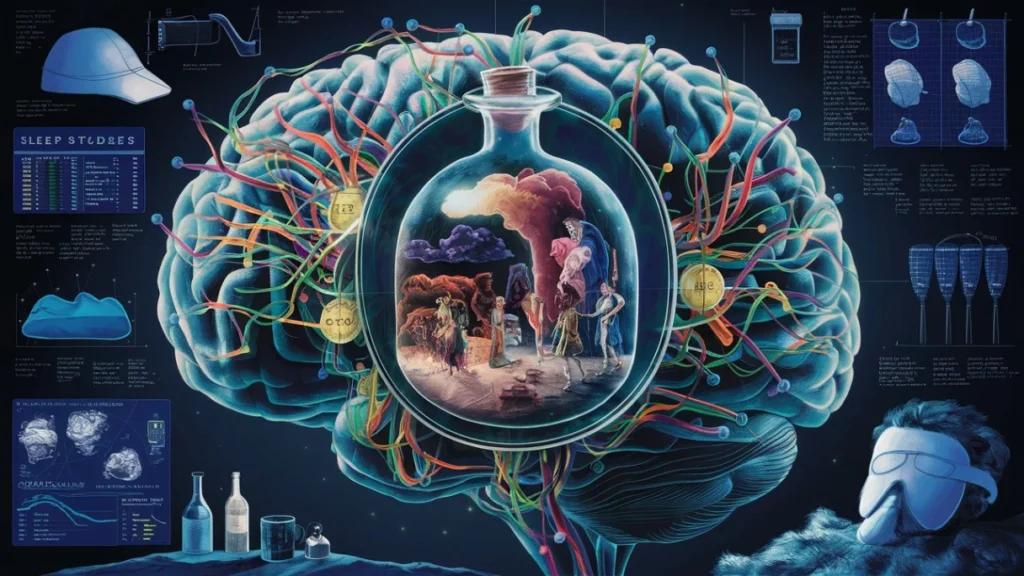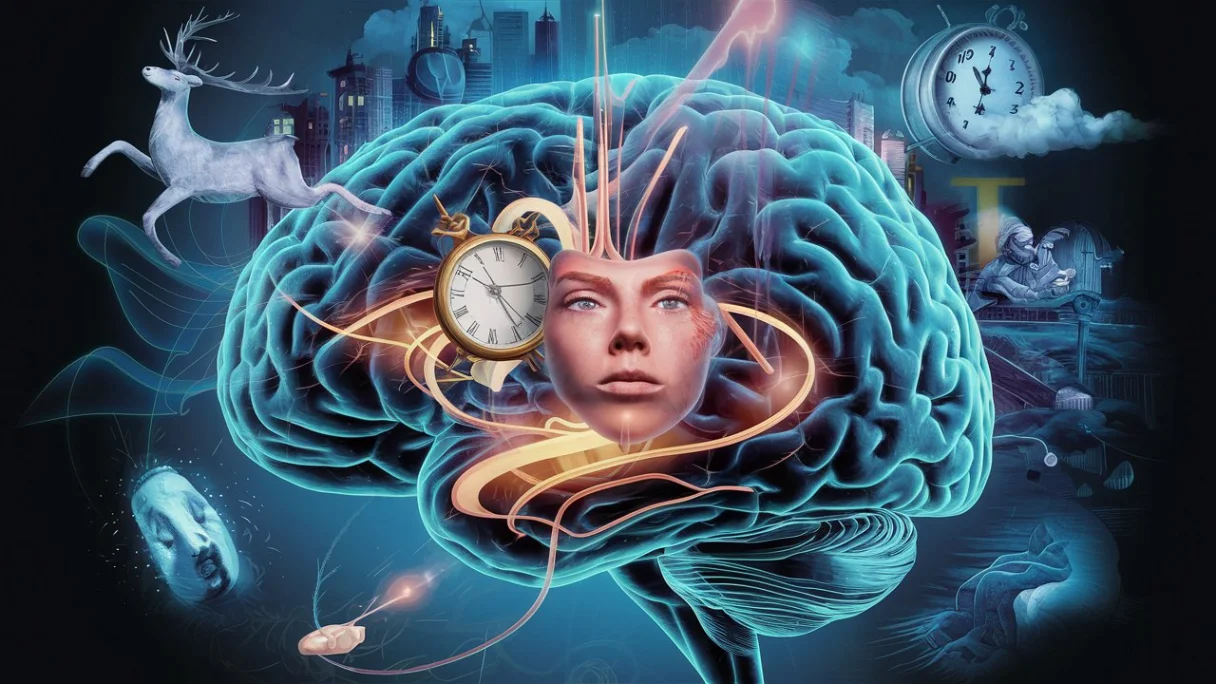The Science Behind Dreams: Exploring the Neurological Basis of Dreaming
Have you ever wondered what’s happening in your brain when you drift off to sleep and start dreaming? Dreams have fascinated humans for centuries, but it’s only in recent decades that science has begun to unravel the complex neurological processes behind this enigmatic phenomenon. In this blog post, we’ll take a deep dive into the science of dreaming, exploring the current theories and research that shed light on why we dream and what’s happening in our brains when we do.
What Happens in the Brain During Sleep?
To understand dreaming, we first need to look at what’s happening in the brain during sleep https://spiritualdream.net/. Sleep is divided into several distinct stages, each characterized by specific patterns of brain activity:
- Stage 1 (N1): This is the lightest stage of sleep, marking the transition from wakefulness to sleep. Brain activity begins to slow down, and you may experience hypnic jerks or the sensation of falling.
- Stage 2 (N2): In this stage, brain waves continue to slow, with occasional bursts of rapid activity called sleep spindles. Eye movements stop, and heart rate and body temperature decrease.
- Stage 3 (N3): Also known as slow-wave sleep or deep sleep, this stage is characterized by the presence of delta waves, the slowest and most synchronized brain waves. It’s during this stage that the body repairs tissues, strengthens the immune system, and consolidates memories.
- Rapid Eye Movement (REM) Sleep: This is the stage most closely associated with dreaming. Brain activity becomes more active, resembling that of wakefulness. Eyes dart back and forth rapidly behind closed lids, and most voluntary muscles are paralyzed to prevent acting out dreams. Heart rate and breathing become irregular.
These stages repeat in cycles throughout the night, with each cycle lasting approximately 90-120 minutes. REM periods get progressively longer with each cycle, with most dreaming occurring in the latter half of the night.
The Neurobiology of Dreaming

So, what’s actually happening in the brain during REM sleep that leads to the vivid, often bizarre experiences we call dreams? While the exact mechanisms are still not fully understood, research has uncovered several key players:
The Pons and REM Sleep Generation
The pons, a structure in the brainstem, has been identified as a crucial region for generating REM sleep. It contains specialized neurons that become active during REM and send signals to other parts of the brain, initiating the characteristic features of this stage.
The Limbic System and Emotional Processing
The limbic system, which includes structures like the amygdala and hippocampus, is involved in processing emotions and forming memories. During REM sleep, the limbic system becomes highly active, which may explain why dreams often have a strong emotional component.
The Cerebral Cortex and Dream Content
Different regions of the cerebral cortex, the outermost layer of the brain, also show increased activity during REM sleep. For example, the occipital lobe, responsible for visual processing, is active, which may account for the visual nature of most dreams. The frontal lobes, involved in higher cognitive functions like decision-making and problem-solving, are less active, possibly contributing to the often illogical and bizarre nature of dream narratives.
Neurotransmitters and Dream Modulation
Several neurotransmitters, the chemical messengers of the brain, play important roles in regulating sleep and dreaming:
- Acetylcholine: This neurotransmitter is released in high amounts during REM sleep, promoting the cortical activation and vivid imagery associated with dreaming.
- Serotonin and Norepinephrine: Levels of these neurotransmitters, which are involved in regulating mood and arousal, are significantly decreased during REM sleep. This may contribute to the often emotional and nonsensical nature of dreams.
- Dopamine: Some studies suggest that dopamine, a neurotransmitter involved in reward and motivation, may also play a role in dreaming. Increased dopamine activity has been linked to more frequent and intense dreaming.
Why Do We Dream? Theories and Hypotheses
Despite advances in our understanding of the neurological basis of dreaming, the question of why we dream remains a subject of debate. Several theories have been proposed, each offering a different perspective on the potential functions and purposes of dreaming:
Activation-Synthesis Theory
Proposed by J. Allan Hobson and Robert McCarley in 1977, this theory suggests that dreams are essentially the brain’s attempt to make sense of random neural activity during REM sleep. According to this view, the pons generates random signals that activate various brain regions, and the cortex then tries to synthesize a coherent narrative from this chaotic input, resulting in the often bizarre and disjointed nature of dreams.
Threat Simulation Theory
This evolutionary theory, put forth by Antti Revonsuo, proposes that dreaming serves as a virtual reality training ground for dealing with potential threats. By simulating threatening situations in dreams, our ancestors could practice and refine their fight-or-flight responses, increasing their chances of survival in the waking world. While modern humans face fewer physical threats, the theory suggests that dreaming may still serve a similar function in preparing us for emotional and social challenges.
Memory Consolidation and Problem-Solving
Some researchers believe that dreaming plays a role in the consolidation of memories and the processing of information acquired during wakefulness. During sleep, the brain is thought to sift through recent experiences, strengthening important connections and discarding irrelevant ones. Dreams may reflect this process, as fragments of memories are incorporated into dream narratives. Additionally, some anecdotal evidence suggests that dreaming can facilitate creative problem-solving, as the unconstrained nature of dream logic allows for novel connections and insights.
Emotional Regulation
Another hypothesis is that dreaming serves as a means of regulating emotions. By processing and integrating emotional experiences during dreams, we may be better equipped to handle them in waking life. This idea is supported by the fact that REM sleep deprivation has been linked to increased emotional reactivity and difficulty with emotional regulation.
Disorders and Abnormalities of Dreaming
While dreaming is a normal and healthy part of sleep, there are several disorders and abnormalities that can affect the dreaming process:
- Nightmares: These are disturbing dreams that often cause feelings of fear, anxiety, or sadness. Nightmares are more common in children but can affect adults as well, particularly those with a history of trauma or mental health issues.
- Recurrent Dreams: Some people experience dreams that repeat over time, often with similar themes or narratives. These dreams may reflect unresolved conflicts or ongoing stressors in waking life.
- Lucid Dreaming: In a lucid dream, the dreamer becomes aware that they are dreaming and may even be able to control the dream’s content. While some people can naturally experience lucid dreams, others may develop this ability through training and practice.
- REM Sleep Behavior Disorder (RBD): In this disorder, the normal muscle paralysis that occurs during REM sleep is absent, allowing individuals to physically act out their dreams. RBD can lead to injury to the dreamer or their bed partner and may be an early sign of neurodegenerative disorders like Parkinson’s disease.
- Sleep Paralysis: This is a temporary inability to move or speak that occurs upon falling asleep or waking up. During sleep paralysis, individuals may experience hallucinations or the sensation of a menacing presence in the room. While frightening, sleep paralysis is generally harmless and not a sign of a more serious condition.
The Future of Dream Research
As our understanding of the brain continues to grow, so too does our knowledge of the complex processes behind dreaming. Advances in neuroimaging techniques, such as functional magnetic resonance imaging (fMRI) and electroencephalography (EEG), are allowing researchers to peer deeper into the sleeping brain and unravel the mysteries of dreaming.
One exciting area of research is the potential use of dreams as a diagnostic tool for mental health disorders. Studies have shown that certain dream characteristics, such as increased aggression or changes in emotional content, may be early indicators of conditions like depression or post-traumatic stress disorder (PTSD). By analyzing dream reports, clinicians may be able to identify and intervene in these disorders earlier, improving outcomes for patients.
Another avenue of exploration is the use of lucid dreaming as a therapeutic tool. Some researchers believe that learning to control one’s dreams could be beneficial for treating nightmares, phobias, and other anxiety-related conditions. By confronting and overcoming fears in the safe environment of a lucid dream, individuals may be able to transfer these coping skills to their waking lives.
| Dreaming Stage | Key Characteristics |
|---|---|
| Non-REM Sleep | Shorter, less vivid, and more thought-like dream experiences |
| REM Sleep | Longer, more vivid, and emotionally intense dream experiences |
As we continue to explore the fascinating world of dreams, it’s clear that there is still much to learn. By unraveling the neurological basis of dreaming, we may gain valuable insights not only into the workings of the sleeping brain but also into the fundamental nature of human consciousness. So the next time you find yourself lost in a particularly vivid dream, take a moment to appreciate the incredible complexity of the brain that makes it all possible.




